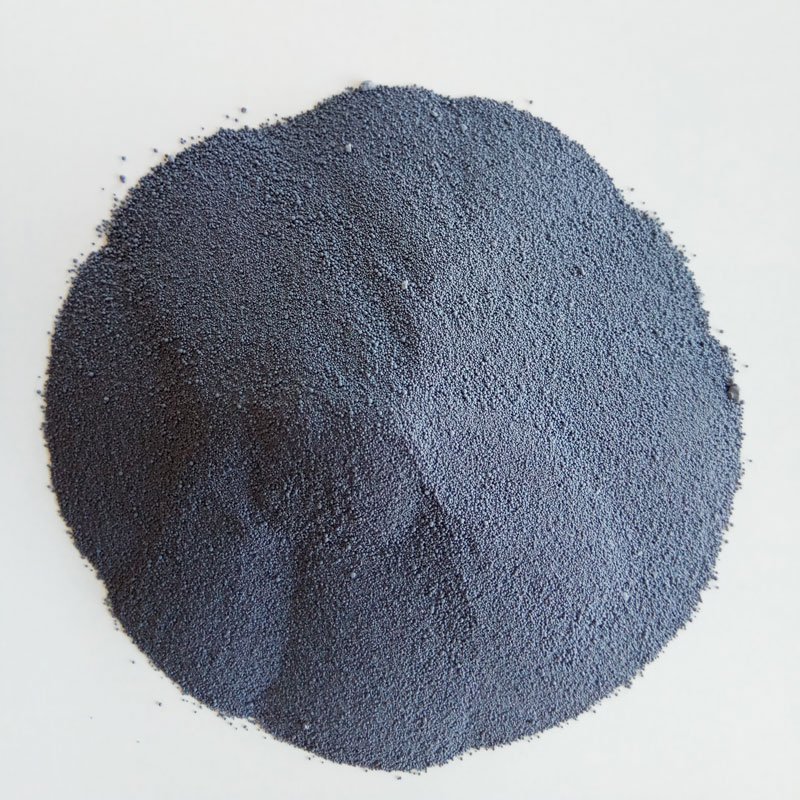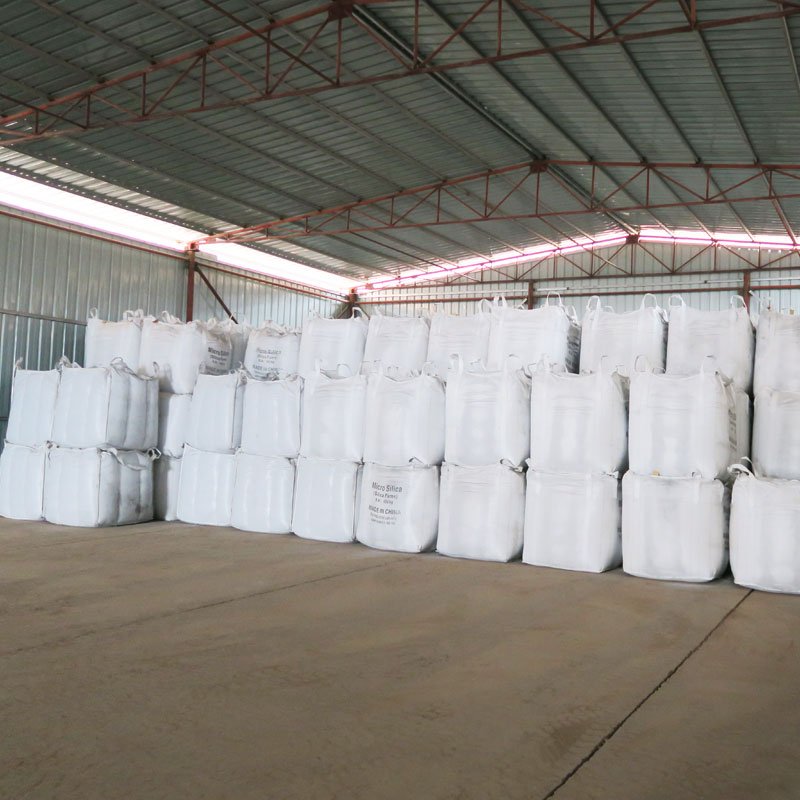Micro-silica fume is a by product of high purity quartz, coke and sawdust reduction in the production of ferrosilicon or metallic silicon during the production of complex reactions in smelting. Among them, the quartz stone and carbon at 1750 ℃, the reduction reaction to produce unstable carbon monoxide, the temperature is higher than 2160 ℃, SiO gas containing gas sent to meet the air below 1100 ℃ with oxygen reaction to produce SiO2, after cooling The formation of high-fineness particles, the filter is collected by the filter is silicon powder. The color of the micro-silica powder is between the light gray and the dark gray, SiO2 itself is colorless, its color depends mainly on the content of carbon and iron oxide, the higher the carbon content, the darker the color, the other Natural silica fume color dark. The particle size of the silica powder is less than 1um, the average particle size is about 0.1um, which is 1/100 of the diameter of the cement particles. Therefore, the silica powder can be highly dispersed in the concrete and filled with the cement particles to improve the density. Silica powder has a very high activity, can be faster and more comprehensive and hydration of hydrogen hydride hydration reaction.
Standard specifications for silica fume used in cementitious mixtures are ASTM C1240,EN 13263.
Silica fume-Microsilica is added to Portland Cement Concrete to improve its properties, in particular its compressive strength, bond strength, and abrasion resistance. These improvements stem from both the mechanical improvements resulting from addition of a very fine powder to the cement paste mix as well as from the Pozzolanic reactions between the silica fume and free calcim hydroxide in the paste.
94% Silica Fume for Concrete:
Addition of silica fume also reduces the permeability of concrete to chloride ions, which protects the reinforcing steel of concrete from corrosion, especially in chloride-rich environments such as coastal regions and those of humid continental roadways and runways (because of the use of deicingsalts) and saltwater bridges.
In the last three decades, microsilica has been widely used as filler in refractory materials, particularly in castables. Microsilica particles have an average size of 0.15 microns and are an amorphous form of silica which may contain smaller quantities of impurities like C, Na or K formed along the production route. Of late, microsilica from ferrosilicon production is not used for refractory applications owing to higher impurity contents. Microsilica in a fresh castable has a dual effect; once properly dispersed, it helps to reduce the cement content of refractory castables due to the small particle size of microsilica. Use of microsilica may also reduce the open porosity from about 20-30% to 8-16% after firing at 1000 ºC, and the drop in mechanical strength that is experienced in conventional castables at intermediate temperatures changes to that of a steady increase. The beneficial effects of microsilica in castables are well established both in theory and practice.
Packaging & Delivery
10kg soluble paper bags x 84 on the pallets.
20kg soluble paper bags x 42 on the pallets.
950kg plastic woven bags x 2 on the pallets(with or without bottom output )
1000kg plastic woven bags x 2 on the pallets(with or without bottom output )
500kg plastic woven bags x 2 on the pallets (with or without bottom output )
We can also produce according to your requirement.
Safety and handing precautions:
Silica fume is generally considered a nuisance dust. Use and handling of silica fume does not represent a health risk when normal safety rules are observed. Direct contact may cause irritation of eyes. Prolonged contact may cause skin irritation. Inhalation may cause respiratory irritation resulting in coughing and shortness of breath. This product may be harmful if swallowed. Do not get in eyes and avoid prolonged skin contact. Do not take internally. Wash thoroughly with water after handling.



